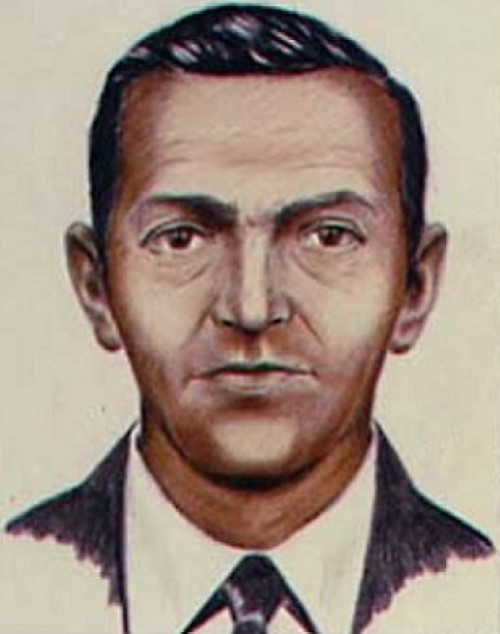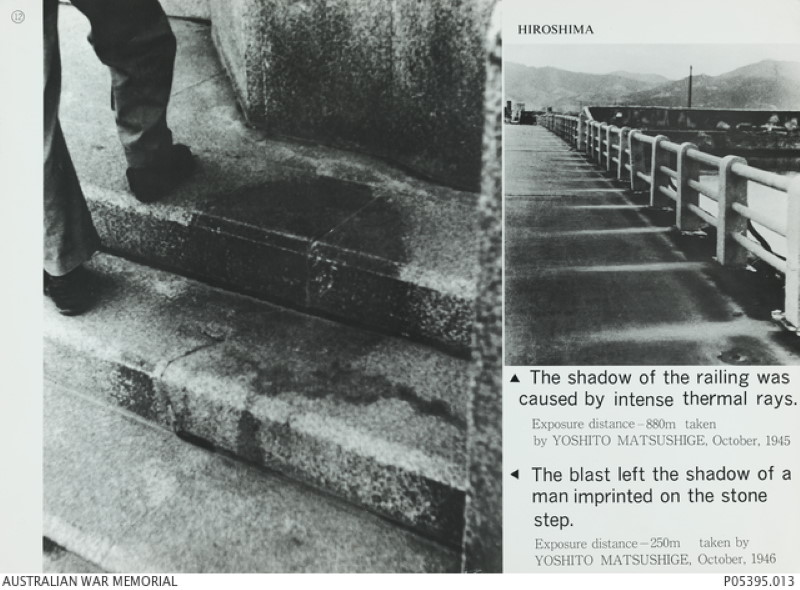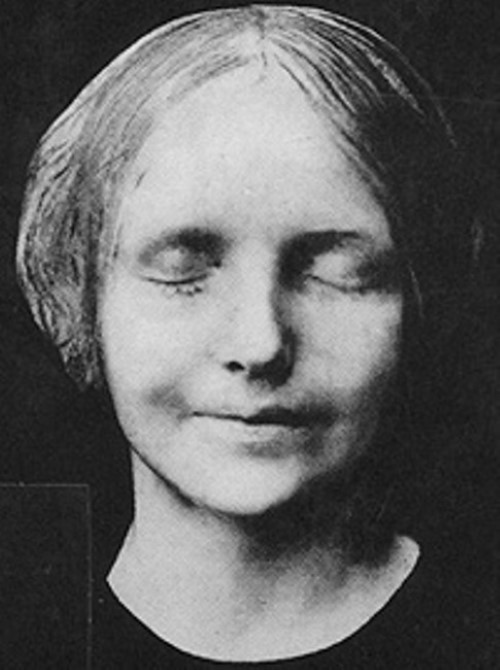In our modern age where anonymity is scarce, it seems unbelievable to think that a person could become world famous without anyone knowing their name. Yet throughout the course of history there have been people who have been brought to the attention of the world stage without anyone knowing their true identity. Of course, there will always be those who become famous (or infamous) for nefarious reasons and go to great lengths to keep their identities hidden, but some of these mysterious people have become cultural and historical icons seemingly by chance or extraordinary circumstance. Sadly, others have become famous in death.
10. The Falling Man
There are countless hours of footage which show the aftermath of the terrorist attacks on the World Trade Centre on September 11, 2001. Shocked bystanders trained their cameras on the buildings and the surrounding area from the very moment the first plane hit and they captured scenes of mass panic as the smoke bellowed out of the two towers before finally collapsing. Some of the most striking footage from the day showed the despair and tragedy of those trapped in the upper levels of the burning buildings. With no hope of escape or rescue, it is estimated that around 200 people leapt out of the windows and plummeted to the ground below. Media coverage of these victims centred on one photograph which was later dubbed ‘The Falling Man’. The image shows a man falling headfirst from the North Tower.
Although other photographs show the man tumbling through the air as he falls, the sight of him falling straight down is a powerful, graphic reminder of the tragedy of the day. The Falling Man received global attention (some media outlets received a barrage of complaints for the disturbing nature of the photograph) but no one was able to positively identify the man. Some have suggested that the man could be Jonathan Briley, a restaurant worker who was on shift in the North Tower when the plane hit. However, as is the case with all of the falling people who were photographed plummeting to their deaths, the identity of the Falling Man will never be officially confirmed.
9. The Hiroshima Steps Shadow
Yoshito, Matsughige 松重美人/public domain
The atomic bombings of Hiroshima and Nagasaki brought about a swift end to the Second World War, but the loss of human life was unparalleled to anything ever seen before in the history of warfare. The explosion of the bombs and their residual effects caused more than 300,000 fatalities, most of them civilians. Near the blast centre, the massive amounts of heat caused by the explosion engulfed and destroyed anything flammable within seconds. One of the most famous photographs taken in Hiroshima after the bombing is the ‘shadow’ of a man who was sitting on stone steps about 850 ft from the hypocentre of the detonation. The imprint, which was caused by the man absorbing the massive amounts of heat and light given off by the bomb, seared his outline into the surrounding stone as a black mass. The shape of the unknown victim’s lower body is clearly visible and although what was left of the steps has long since been demolished and rebuilt, the photographs of these ‘shadows’ are haunting reminders of the devastating power of atomic warfare.
8. L’Inconnue de la Seine
The tale of the ‘unknown woman of the Seine’ is well known and oft-repeated but no one knows if it’s really true. The story goes that at some point in the late 1880s the body of a young woman was dredged from the River Seine in Paris. The body showed no signs of violence and suicide was thought to be the cause of death. When the body was put on display in the mortuary, a pathologist was so taken with the young woman’s beauty and half-smiling expression that he requested to make a death mask of her face. Numerous copies were made and it wasn’t long before copies of the plaster cast were being sold in markets and shops. The death mask became a popular muse for the French bohemia and it was a morbid fixture in the homes of many writers, artists and poets. In the 1960s, the mask was used for the head of the first ‘Resusci Anne’ CPR mannequin and it has been remarked that she has become the most kissed face of all time. Some argue that a person who has died from drowning wouldn’t have such a peaceful-looking corpse and that their face at the very least would show signs of swelling, but no other evidence has come forward as to the true identity of this mysterious woman.
7. Kevin Carter’s Sudanese Child
While travelling in Sudan in 1993 photojournalist Kevin Carter took a photograph which shocked the world. Sudan was suffering from horrific poverty and famine because of an ongoing civil war, and Carter had headed to Africa to photograph the war-torn country and its people. When he landed in the village of Ayod, Carter was taking photographs of famine victims when he heard a low noise coming from nearby bushes. He came across an emaciated, exhausted young girl whimpering in a bush clearing as she attempted to crawl to a feeding centre. Carter’s photograph of the scene shows a vulture looming ominously in the background as the young girl is huddled up on the dusty ground. When it was printed in the New York Times, the image brought the plight of Sudan to the attention of people around the world. The startling nature of the scene caused hundreds to contact the newspaper to ask about the fate of the little girl, but neither the New York Times nor Kevin Carter knew who she was or what happened to her. Carter apparently chased the bird off after he had taken the photograph but he was advised not to touch the girl in case he contracted a disease. Carter went on to win the Pulitzer Prize for the photograph in 1994 but he received criticism for exploiting the situation for his own gain. Although the photograph had also managed to draw attention to the humanitarian effort in Sudan, the backlash was seemingly too much for the already troubled photojournalist and he killed himself later that year.
6. The Bodies of Mt Everest
https://www.youtube.com/watch?v=ea9voMN4pAM
Climbing to the summit of Mount Everest is considered to be one of the most difficult physical challenges the human body is capable of. Almost 200 people have died on Mount Everest since the very first mountaineering expedition was attempted in 1922, and most of their corpses remain on the mountain to this day. The risk of avalanches is high and this is the cause of the majority of fatalities, but many people die when they hit the ‘death zone’ – a mountaineering term which refers to any altitude exceeding 8,000m. At this high altitude there is not enough oxygen to sustain human life and the body cannot properly acclimatize itself. These conditions gradually deteriorate vital functions in the human body leading to death, but the effects of physical weakness can also cause even the most experienced of climbers to make careless mistakes. Conditions in the higher altitudes makes removal of the bodies risky and very dangerous, so some people are simply left where they die. Although most of these bodies have been identified (and many have cairns erected around them as a mark of respect), there are photographs and video footage of unknown corpses recorded by climbers passing by on their route to the summit. The most well-known is ‘Green Boots’ – a body found in a cave in the Northeast ridge of the mountain which is wearing green mountaineering boots. Green Boots is thought to be one of the climbers who perished in the 1996 Mount Everest blizzards and the body’s identity has never been 100% verified. There have also been some expeditions where the bodies of missing climbers are yet to be found. For example, George Mallory was a climber who went missing during the 1924 British Everest expedition but his body was not positively identified until a research team found it in 1999.
5. The Last Jew in Vinnitsa
‘The Last Jew in Vinnitsa’ is a photograph which was found in the scrapbook of a German death squad soldier following the Second World War. The soldier had written the words on the back of a photograph which shows an unknown Jewish man kneeling over a huge mass grave of corpses. Behind him stands an Einsatzgruppen (death squad) officer surrounded by fellow German soldiers as he holds a pistol to the back of the man’s head. The photograph is one of many surviving pieces of historical evidence which shows how the Nazi party committed mass extermination of the Jewish people during the Second World War, and the expressionless face of the executor (contrasted with the haunted, far-off gaze of the man about to be shot) is a shocking reminder of the ‘banality of evil’. More than 28,000 Jews from Vinnitsa and its surrounding areas were massacred and buried in mass graves during September 1941. Neither man has been positively identified but it is assumed that the Ukrainian man was executed shortly after the photograph was taken.
4. D.B. Cooper
FBI
D.B. Cooper is the pseudonym used by one of the most notorious criminals in American history. On November 24, 1971, a man travelling under the alias Dan Cooper (the media later erroneously printed his name as D.B. Cooper) hijacked a Boeing 727 mid-flight and took the crew and passengers hostage. Cooper told a flight attendant that he had a bomb in his briefcase and asked the pilot to contact air traffic control in nearby Seattle and demand that they ready $200,000 in cash, 4 parachutes and a refuelling truck for when the plane landed. The authorities complied and Cooper released the passengers in Seattle, keeping only the cockpit crew on board. The plane took off again with a course towards Mexico City, but at some point during the flight Cooper lowered the aircraft’s rear staircase and parachuted out of the plane. Despite a huge FBI manhunt commencing around the area where Cooper was presumed to have landed, no trace of the man or his parachute was even found. A portion of the cash was found downstream in the Columbia River four years later, but no other material evidence was ever discovered and the FBI investigation is still ongoing more than 40 years later.
3. The V-J Day Sailor
When it was announced on August 14th, 1945 that Japan had finally surrendered to Allied forces and brought an end to the Second World War, crowds of people took to the streets to celebrate. In New York City, Time Square was full of crowds of people who were overjoyed that the bloody global conflict had finally ended. The emotions of the day are encapsulated in one iconic photograph taken by photojournalist Alfred Eisenstaedt which shows a sailor taking a young nurse into his arms and kissing her in the middle of the sea of people. The photograph rapidly became a cultural icon and Eisenstaedt later gave context to the scene stating that the sailor was grabbing and kissing any woman he could see. Eisenstaedt managed to quickly snap off a photograph at the right time as he grabbed the young nurse. In the years since, the identity of the pair has been hotly debated and different men and women have seen their scrutinised in interviews, polygraph tests and even under forensic analysis. Although some of these claims seem more likely than others, it is unlikely that there will even be a definitive answer to who the mysterious couple really was.
2. The Babushka Lady
The film footage and photographs taken by bystanders during the assassination of President John F Kennedy have been poured over and examined by countless people over the years. Official investigatory commissions and conspiracy theorists alike have sought to seek out what really happened during one of the most important, shocking events in modern history, and the truth may lie with one bystander who, 40 years later, still hasn’t being identified. The Zapruder footage of the assassination shows a woman wearing a headscarf standing on the other side of the President’s motorcade. Crucially, this ‘Babushka Lady’ was seen carrying a camera and she had a perfect view of the infamous grassy knoll. Many have speculated that if this woman was indeed using her camera as the motorcade travelled past her then the photographs could reveal if there really was a second shooter on the grassy knoll. However, despite clear photographs showing the woman on the day, she has still not been identified. A woman named Beverly Oliver came forward during the 1970s claiming to be the Babushka Lady and a Kodak technician also said he developed out-of-focus shots from a camera brought in by a woman who may have matched her description, but neither claim has been verified (Oliver’s recollection of the day was filled with inconsistencies and she was ultimately discredited as a fame-seeker).
1. Tiananmen Square Tank Man
The video footage of the ‘Tank Man’ from Tiananmen Square is arguably one of the most iconic videos ever recorded. Following the violent suppression of student-led protests held in Tiananmen Square (also known as the Tiananmen Square Massacre) on June 3rd and 4th, 1989, the Chinese military continued to send reinforcements to the area. On June 5th, video footage shows one lone man standing directly in the path of an advancing column of Type 59 tanks. When the tank tries to manoeuvre around the man, he sidesteps and keeps in its path. He then jumps on the roof and appears to have a short conversation with the tank driver before jumping back down and standing in its path yet again. He does this for about 2 minutes until he is finally ushered away by a small crowd of people. To this day, no one knows who the Tank Man is or what happened to him. A high-angled photograph taken by a Newsweek photographer gives the true scale of the scene and shows that the formation of these advancing tanks stretches back as far as the eye can see, but the man’s face is not properly visible. Some claim that it was government officials who swept him away but others state that it looks more like concerned members of the public. Conflicting official reports state that he was executed by the Chinese government shortly afterwards, but others also say that they had no idea who he was and that they couldn’t find him afterwards. To this day, China’s propaganda machine excludes any mention of the Tiananmen Square protests from discussion and from the history books, but for the West the Tank Man endures as a symbol of protest and as proof of China’s government censorship.





2 Comments
Your photo is The Isdal Woman, not the Mona Lisa of the Seine. Isdal woman was in her 40’s,not a teen,or twenty.
nice bro very well done give it up